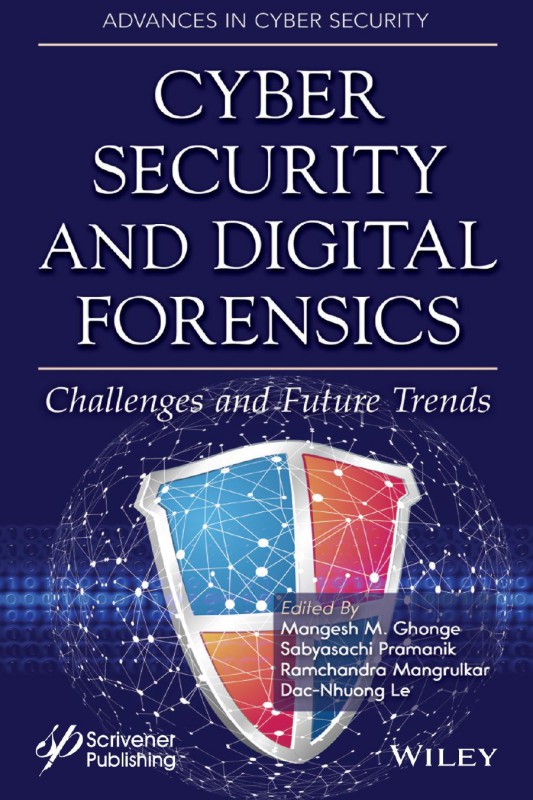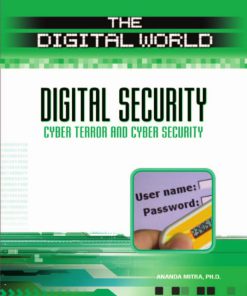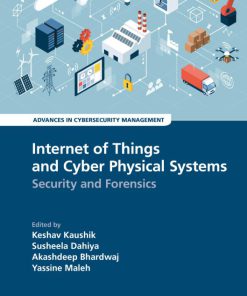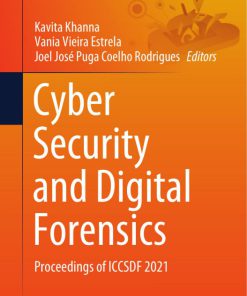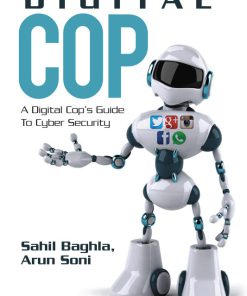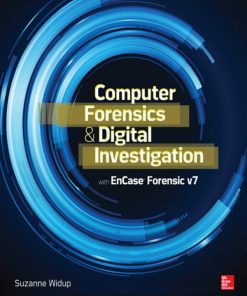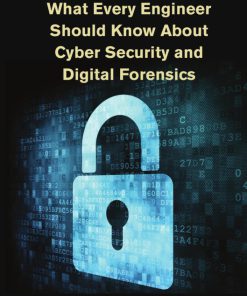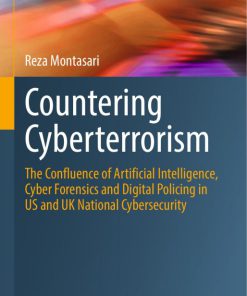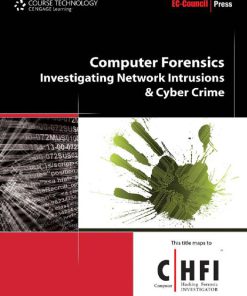Cyber Security and Digital Forensics 1st edition by Mangesh Ghonge 1119795648 9781119795643
$50.00 Original price was: $50.00.$25.00Current price is: $25.00.
Authors:Mangesh M. Ghonge , Author sort:Ghonge, Mangesh M.
Cyber Security and Digital Forensics 1st edition by Mangesh M. Ghonge – Ebook PDF Instant Download/DeliveryISBN: 1119795648, 9781119795643
Full download Cyber Security and Digital Forensics 1st edition after payment.
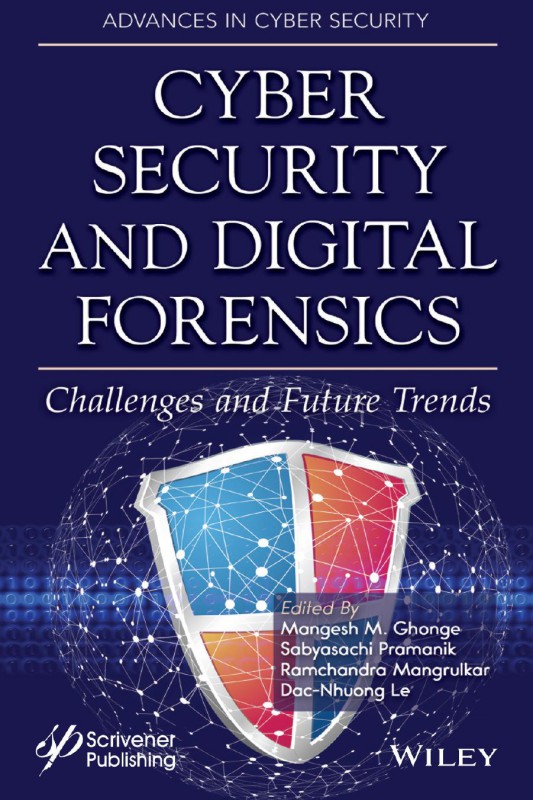
Product details:
ISBN-10 : 1119795648
ISBN-13 : 9781119795643
Author : Mangesh Ghonge
Current cyber threats are getting more complicated and advanced with the rapid evolution of adversarial techniques. Networked computing and portable electronic devices have broadened the role of digital forensics beyond traditional investigations into computer crime. The overall increase in the use of computers as a way of storing and retrieving high-security information requires appropriate security measures to protect the entire computing and communication scenario worldwide. Further, with the introduction of the internet and its underlying technology, facets of information security are becoming a primary concern to protect networks and cyber infrastructures from various threats.
Cyber Security and Digital Forensics 1st Table of contents:
1 A Comprehensive Study of Security Issues and Research Challenges in Different Layers of Service-Oriented IoT Architecture
1.1 Introduction and Related Work
1.2 IoT: Evolution, Applications and Security Requirements
1.3 Service-Oriented IoT Architecture and IoT Protocol Stack
1.4 Anatomy of Attacks on Service-Oriented IoT Architecture
1.5 Major Security Issues in Service-Oriented IoT Architecture
1.6 Conclusion
References
2 Quantum and Post-Quantum Cryptography
2.1 Introduction
2.2 Security of Modern Cryptographic Systems
2.3 Quantum Key Distribution
2.4 Post-Quantum Digital Signature
2.5 Conclusion and Future Directions
References
3 Artificial Neural Network Applications in Analysis of Forensic Science
3.1 Introduction
3.2 Digital Forensic Analysis Knowledge
3.3 Answer Set Programming in Digital Investigations
3.4 Data Science Processing with Artificial Intelligence Models
3.5 Pattern Recognition Techniques
3.6 ANN Applications
3.7 Knowledge on Stages of Digital Forensic Analysis
3.8 Deep Learning and Modelling
3.9 Conclusion
References
4 A Comprehensive Survey of Fully Homomorphic Encryption from Its Theory to Applications
4.1 Introduction
4.2 Homomorphic Encryption Techniques
4.3 Homomorphic Encryption Libraries
4.4 Computations on Encrypted Data
4.5 Applications of Homomorphic Encryption
4.6 Conclusion
References
5 Understanding Robotics through Synthetic Psychology
5.1 Introduction
5.2 Physical Capabilities of Robots
5.3 Traditional Psychology, Neuroscience and Future Robotics
5.4 Synthetic Psychology and Robotics: A Vision of the Future
5.5 Synthetic Psychology: The Foresight
5.6 Synthetic Psychology and Mathematical Optimization
5.7 Synthetic Psychology and Medical Diagnosis
5.8 Conclusion
References
6 An Insight into Digital Forensics: History, Frameworks, Types and Tools
6.1 Overview
6.2 Digital Forensics
6.3 Digital Forensics History
6.4 Evolutionary Cycle of Digital Forensics
6.5 Stages of Digital Forensics Process
6.6 Types of Digital Forensics
6.7 Evidence Collection and Analysis
6.8 Digital Forensics Tools
6.9 Summary
References
7 Digital Forensics as a Service: Analysis for Forensic Knowledge
7.1 Introduction
7.2 Objective
7.3 Types of Digital Forensics
7.4 Conclusion
References
8 4S Framework: A Practical CPS Design Security Assessment & Benchmarking Framework
8.1 Introduction
8.2 Literature Review
8.3 Medical Cyber Physical System (MCPS)
8.4 CPSSEC vs. Cyber Security
8.5 Proposed Framework
8.6 Assessment of Hypothetical MCPS Using 4S Framework
8.7 Conclusion
8.8 Future Scope
References
9 Ensuring Secure Data Sharing in IoT Domains Using Blockchain
9.1 IoT and Blockchain
9.2 IoT Application Domains and Challenges in Data Sharing
9.3 Why Blockchain?
9.4 IoT Data Sharing Security Mechanism On Blockchain
9.5 Conclusion
References
10 A Review of Face Analysis Techniques for Conventional and Forensic Applications
10.1 Introduction
10.2 Face Recognition
10.3 Forensic Face Recognition
10.4 Conclusion
References
11 Roadmap of Digital Forensics Investigation Process with Discovery of Tools
11.1 Introduction
11.2 Phases of Digital Forensics Process
11.3 Analysis of Challenges and Need of Digital Forensics
11.4 Appropriateness of Forensics Tool
11.5 Phase-Wise Digital Forensics Techniques
11.6 Pros and Cons of Digital Forensics Investigation Process
11.7 Conclusion
References
12 Utilizing Machine Learning and Deep Learning in Cybesecurity: An Innovative Approach
12.1 Introduction
12.2 Proposed Method
12.3 Experimental Studies and Outcomes Analysis
12.4 Conclusions and Future Scope
References
13 Applications of Machine Learning Techniques in the Realm of Cybersecurity
13.1 Introduction
13.2 A Brief Literature Review
13.3 Machine Learning and Cybersecurity: Various Issues
13.4 ML Datasets and Algorithms Used in Cybersecurity
13.5 Applications of Machine Learning in the Realm of Cybersecurity
13.6 Conclusions
References
14 Security Improvement Technique for Distributed Control System (DCS) and Supervisory Control-Data Acquisition (SCADA) Using Blockchain at Dark Web Platform
14.1 Introduction
14.2 Significance of Security Improvement in DCS and SCADA
14.3 Related Work
14.4 Proposed Methodology
14.5 Result Analysis
14.6 Conclusion
References
15 Recent Techniques for Exploitation and Protection of Common Malicious Inputs to Online Applications
15.1 Introduction
15.2 SQL Injection
15.3 Cross Site Scripting
15.4 Cross Site Request Forgery
15.5 Command Injection
15.6 File Inclusion
15.7 Conclusion
References
16 Ransomware: Threats, Identification and Prevention
16.1 Introduction
16.2 Types of Ransomwares
16.3 Ransomware Life Cycle
16.4 Detection Strategies
16.5 Analysis of Ransomware
16.6 Prevention Strategies
16.7 Ransomware Traits Analysis
16.8 Research Directions
16.9 Conclusion
People also search for Cyber Security and Digital Forensics 1st:
school of cyber security and digital forensics
bsc hons cyber security and digital forensics
international journal of cyber security and digital forensics
diploma in cyber security and digital forensics
masters in cyber security and digital forensics

